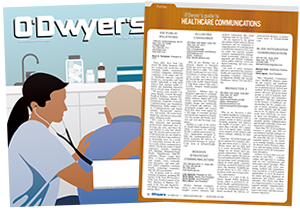 Chowning Johnson |
The fallout from inconsistency
|
|
Even though it’s risky to base your marketing and communications strategy on transitory thoughts and ideas, it’s easy to see how companies can inadvertently go down this path. We’ve all been to conferences or sat in meetings where we hear the latest buzzwords and get swept up in the excitement, feeling compelled to participate, even if it’s not in our best interests.
The problem is that when you succumb to this urge, usually there are negative consequences. In addition to wasting time and resources developing new messages that don’t fit with your brand, you also cause confusion among potential and existing customers. When your communications are somewhat erratic, the market may not fully understand who you are or what you do best. This makes it hard to drive sales, and it can even alienate your existing customers, especially when they think they are getting one product or service but then read about how you actually deliver something else.
Lack of consistency also presents challenges for internal communications because the company is not completely aligned around the product’s message. Your sales team can give different pitches and thought leaders can take conflicting stances, adding to the confusion. Your ability to recruit talent might also be affected because the organization can’t articulate a clear vision or mission, which may be off-putting to a potential employee.
Staying flexible yet committed
Remaining true to your message does not mean that you should automatically reject interesting suggestions or avoid responding to emerging trends. In reality, these may generate great ideas and opportunities. However, before racing headlong down a new direction, make sure to put things in the proper context so you deploy your responses in the right way and maintain a strong, distinct persona in the market.
The following are a few strategies for striking this essential balance.
Know who you are, and who you aren’t
Every company should, at some point, engage in an exercise to validate their positioning. This will involve actively seeking and listening to external feedback, such as market research, customer surveys, focus groups and so on. Some organizations have found benefit in creating an advisory board and periodically turning to them for guidance. Industry analysts also make a good input source because they provide an external, objective view.
Once you’ve collected qualitative and quantitative information, it may be helpful to make a point-by-point list of where your company plays and where it doesn’t, so there is no confusion about your place in the market. This is particularly important if you want to enter a new category or pivot in an existing one.
Be collaborative
A company is more likely to slip into a water cooler mentality when employees aren’t aware of or invested in the company’s current positioning. Therefore, marketing and communication teams should make sure they don’t operate in silos, and instead reach out to stakeholders to foster alignment. It is vital for key leaders to feel their perspective matters and that the ultimate communications strategy will help them meet their goals. Once the positioning is finalized, the marketing team should share details about the approach, so that everyone is on the same page and speaking the same language.
Show, don’t tell
Companies that outperform their competitors spend more time showing their brand’s benefits rather than explaining them. They share data, customer case studies, survey information and other types of external validation. By passing the megaphone around, these companies demonstrate their excellence as opposed to just talking about it, adding more credibility to the message.
Not only is this important for marketing collateral, it is also critical when crafting thought leadership pieces. If your organization is going to take a stance on a certain topic, it’s imperative to have data behind your claim and not rely on sentiments from company thinkers. If hard numbers aren’t available, client experiences or other third-party authentication can be a good substitute. Otherwise, people won’t believe you, and you may come across as merely trying to sell them something. This will eventually hurt your reputation rather than elevate it.
Don’t let latest crazes alter your course
Healthcare is a dynamic field, and there will always be new developments, trends and perspectives. While organizations should be aware of these, they should avoid being controlled by them. This is where relying on the opinions of your marketing and PR agency or another third-party expert may be valuable as they offer a more global perspective and can anticipate whether entering the conversation is worth your time. Plus, they can suggest the most appropriate ways to weave new concepts into existing plans.
Creating a lasting and compelling brand takes commitment, focus and no small amount of work. However, if companies start with a foundation built on facts and resist the temptation to respond to every new fad, they can take their communications to the next level, attracting and retaining customers for years to come.
* * *
Chowning Johnson is Senior Vice President at Dodge Communications.



 Lo Isidro, senior director at Real Chemistry with more than a decade of strategic communications and PA experience, has joined Narrative Strategies.
Lo Isidro, senior director at Real Chemistry with more than a decade of strategic communications and PA experience, has joined Narrative Strategies. Nelson Fernandez, former North American chair of APCO Worldwide and managing director of Burson-Marsteller, has joined Volunteers in Medicine Berkshires as director of communications and PA.
Nelson Fernandez, former North American chair of APCO Worldwide and managing director of Burson-Marsteller, has joined Volunteers in Medicine Berkshires as director of communications and PA. Lilit Bargar, who was most recently an EVP in the healthcare practice at Weber Shandwick, comes on board at GCI Health as EVP, corporate practice lead.
Lilit Bargar, who was most recently an EVP in the healthcare practice at Weber Shandwick, comes on board at GCI Health as EVP, corporate practice lead.
 Five ways that successful thought leaders are made.
Five ways that successful thought leaders are made.


 Have a comment? Send it to
Have a comment? Send it to 
No comments have been submitted for this story yet.